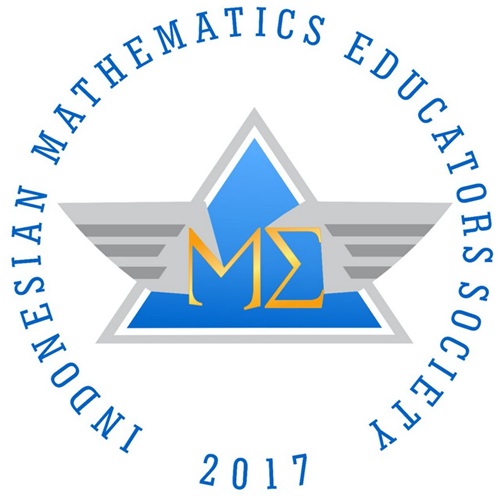Planning Contextual Problem Solving: Based on Formula or Context?
DOI:
https://doi.org/10.22437/edumatica.v11i02.13344Keywords:
devise a plan, geometry, problem solvingAbstract
This study aims to analyze the planning process for solving contextual problems. The research subjects consisted of three students of class IX SMP. The research used is a qualitative research with a descriptive approach. The instrument used is a task-based interview. The data is analyzed according to the indicators of problem solving at the planning stage, namely identifying information, selecting old knowledge that can be used in problem solving, mentioning theorems related to the problem, making plans. The results showed that the first student was able to identify the information needed but the student did not submit it in writing. The first student solved the problem using the volume formula, but the student experienced a conceptual error in the middle of completion. The second student is able to identify and write down the required information, the second student uses mathematical formulas and estimates to determine the amount of wrapping paper needed. The third student is able to understand which information can be used and which information is redundant. At first the third student used the formula to solve the problem, but in the middle of the completion the student changed the plan by applying real life/context applications. Based on the results of research conducted that two students out of three students when solving problems did not pay attention to the context.
Downloads
References
Anggo, M. (2011). Pemecahan Masalah Matematika Kontekstual untuk Meningkatkan Kemampuan Metakognisi Siswa. Edumatika, 1(2), 35-42.
Arfiana, A., & Wijaya, A. (2018). Problem Solving Skill of Students of Senior High Schools and Islamic High Schools in Tegal Regency in Solving the Problem of PISA based on Polya’s Stage. Jurnal Riset Pendidikan Matematika, 5(2), 211-222. https://doi.org/10.21831/jrpm.v5i2.15783
Arumanita, D. M., Susanto, H., & Rahardi, R. (2018). Kemampuan Pemecahan Masalah Siswa SMP Negeri 1 Papar pada Materi Bangun Ruang. Jurnal Math Educator Nusantara: Wahana Publikasi Karya Tulis Ilmiah Di Bidang Pendidikan Matematika, 4(2), 104. https://doi.org/10.29407/jmen.v4i2.12106
Dindyal, J., Tay, E. G., Toh, T. L., Leong, Y. H., & Quek, K. S. (2012). Mathematical Problem Solving for Everyone: A New Beginning. The Mathematics Educator, 13(2), 1-20.
Hartono, J. A., & Karnasih, I. (2017). Pentingnya Pemodelan Matematis dalam Pembelajaran Matematika. Semnastika Unimed, 1-8.
Kaliky, S. H., Nurlaelah, E., & Jupri, A. (2019). Analysis of Mathematical Problem Solving Ability Students of Junior High School to Polya Model. Journal of Physics: Conference Series, 1157(4), 042064. https://doi.org/10.1088/1742-6596/1157/4/042064
Kang, W. (2015). Implications from Polya and Krutetskii. In Selected Regular Lectures from the 12th International Congress on Mathematical Education (pp. 405-416). Cham: Springer International Publishing. https://doi.org/10.1007/978-3-319-17187-6_23
Lestari, R. S., Rohaeti, E. E., & Purwasih, R. (2018). Profil Kemampuan Koneksi Matematis Siswa SMP dalam Menyelesaikan Soal Bangun Ruang Sisi Datar Ditinjau dari Kemampuan Dasar. JIPMat, 3(1), 51-58. https://doi.org/10.26877/jipmat.v3i1.2220
Muchyidin, A., Nurlatif, L., & Nursuprianah, I. (2020). Miskonsepsi Siswa pada Pemahaman Konsep Bangun Ruang. JRPM (Jurnal Review Pembelajaran Matematika), 5(2), 72-86. https://doi.org/10.15642/jrpm.2020.5.2.72-86
Nadhifa, N., Maimunah, M., & Roza, Y. (2019). Analisis Kemampuan Pemecahan Masalah Siswa pada Materi Bangun Ruang Sisi Datar. NUMERICAL: Jurnal Matematika Dan Pendidikan Matematika, 3(1), 63-76. https://doi.org/10.25217/numerical.v3i1.477
Polya, G. (1945). How to solve it. Humphrey Milford: Princeton University Press.
Puadi, E. F. W. (2017). Analisis Peningkatan Kemampuan Koneksi Matematis Mahasiswa Ptik Melalui Pembelajaran Berbasis Masalah. JUMLAHKU: Jurnal Matematika Ilmiah STKIP Muhammadiyah Kuningan, 2(1), 85-103. Retrieved from http://jurnal.upmk.ac.id/index.php/jumlahku/article/view/139
Putra, H. D., Thahiram, N. F., Ganiati, M., & Nuryana, D. (2018). Kemampuan Pemecahan Masalah Matematis Siswa SMP pada Materi Bangun Ruang. JIPM (Jurnal Ilmiah Pendidikan Matematika), 6(2), 82-90.
Rio, M., & Pujiastuti, H. (2020). Analisis Kemampuan Pemecahan Masalah Matematik Siswa SMP pada Materi Bilangan Bulat. AKSIOMA : Jurnal Matematika Dan Pendidikan Matematika, 11(1), 70-81. https://doi.org/10.26877/aks.v11i1.6105
Rofi’ah, N., Ansori, H., & Mawaddah, S. (2019). Analisis Kesalahan Siswa dalam Menyelesaikan Soal Cerita Matematika berdasarkan Langkah Penyelesaian Polya. EDU-MAT: Jurnal Pendidikan Matematika, 7(2), 120. https://doi.org/10.20527/edumat.v7i2.7379
Saputri, R. A. (2019). Analisis Pemecahan Masalah Soal Cerita Materi Perbandingan Ditinjau dari Aspek Merencanakan Polya. Wacana Akademika: Majalah Ilmiah Kependidikan, 3(1), 21-38.
Simpol, N. S. H., Shahrill, M., Li, H.-C., & Prahmana, R. C. I. (2017). Implementing Thinking Aloud Pair and Pólya Problem Solving Strategies in Fractions. Journal of Physics: Conference Series, 943(1), 012013. https://doi.org/10.1088/1742-6596/943/1/012013
Utami, R. (2013). Model Pembelajaran Berbasis Masalah dengan Langkah Penyelesaian berdasarkan Polya dan Krulik-Rudnick Ditinjau dari Kreativitas Siswa. Jurnal Ilmiah Pendidikan Matematika, 1(1), 82-98.
Widyastuti, N. S., & Pujiastuti, P. (2014). Pengaruh Pendidikan Matematika Realistik Indonesia (PMRI) terhadap Pemahaman Konsep dan Berpikir Logis Siswa. Jurnal Prima Edukasia, 2(2), 183. https://doi.org/10.21831/jpe.v2i2.2718
Yuwono, T., Supanggih, M., & Ferdiani, R. D. (2018). Analisis Kemampuan Pemecahan Masalah Matematika dalam Menyelesaikan Soal Cerita Berdasarkan Prosedur Polya. Jurnal Tadris Matematika, 1(2), 137-144. https://doi.org/10.21274/jtm.2018.1.2.137-144
Downloads
Published
How to Cite
Issue
Section
License
Copyright (c) 2021 Suki Isffi Ani, Abdul Haris Rosyidi

This work is licensed under a Creative Commons Attribution-NonCommercial-ShareAlike 4.0 International License.







